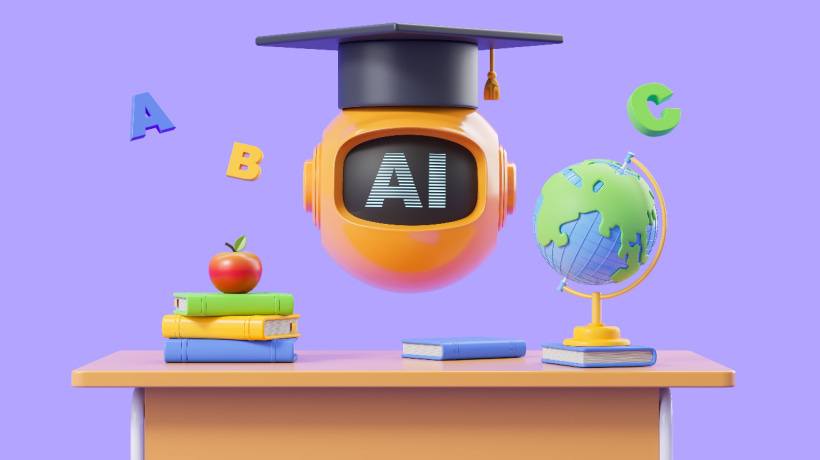AI Learning Assistants: The GPS For Personalized K-12 Learning Paths
Google Maps and GPS have really spoilt us all. We can no longer imagine opening out a massive paper map to find the best route. Plus, if there’s an unexpected road closure, it quickly reroutes you without any effort. Education could be just like that—guiding students along the best route to achieve their learning goals. This is exactly what AI learning assistants do. They assist educators in finding the best learning paths to support individual students’ learning.
But that’s not all. Have you noticed how a GPS provides lane departure warnings, assists in parking, and can even hit brakes when integrated with the vehicle for assisted driving? AI in education is the same—it can do much more than simply define learning paths. Discover how cutting-edge technology is augmenting human effort and reshaping teaching and learning experiences for K-12 and higher education, just like a GPS.
Dynamically Re-Routing Learning Journeys
The most significant advantage of leveraging AI learning assistants is aiding the delivery of personalized learning experiences. AI-powered learning analytics tools ingest a variety of student data, such as:
- Activity on the learning platform
- Preferred learning formats and times
- Learning pace and progress
- Skill and knowledge gaps
- Interactions with the AI learning assistant
…and much more.
Just like a GPS modifies the route to ensure that you experience the least traffic and arrive on time at your destination, AI-powered tools ensure that students achieve the desired learning outcomes through the best-suited paths. All this while following the established curriculum. These tools even personalize assessments and learning feedback to tailor holistic educational experiences. AI learning assistants can also apply the Socratic method, encouraging students to independently discover answers to their questions and assignments. Putting students behind the wheel helps them navigate the educational journey autonomously, fostering ownership and accountability.
Assisting Teachers To Navigate Diverse Classrooms
Firstly, this needs to be stated: Teachers are irreplaceable, and AI is a tool to make teachers better at what they do—teach. AI learning assistants improve teaching experiences in several ways. Teachers spend uncountable hours developing and evaluating assessments, grading assignments, maintaining students’ learning data, and creating progress reports. AI-powered K-12 education tools can take over many of these tasks, such as tracking attendance, grading, looking for alternative sources, and translating complex topics and concepts. According to the World Economic Forum, by taking over up to 20% of administrative and repetitive tasks, AI tools free up teachers’ time to focus on engaging and inspiring students.
What distinguishes AI-powered classrooms from traditional ones is the ability to identify whether a student is struggling so that intervention is initiated in real time. Early intervention and timely support ensure continued student engagement. AI-powered immediate feedback on assignments frees teachers from the endless cycle. It allows them to connect with students on the most important activity: learning guidance. Teachers’ availability, guidance, and encouragement make learning more satisfying for students. As the role of the teacher shifts from rating learner progress to facilitating it, students’ fear of making mistakes is significantly lowered.
Accelerating Learning And Bolstering Engagement
Augmenting digital learning platforms with AI learning assistants drives greater student engagement via interactive mechanisms. These assistants solve student queries as and when they occur, preventing the student from dropping out in the face of difficulty. Plus, learning continuity is maintained even in the absence of the teacher. Intelligent searching assistance allows students to find supplementary resources for complex topics. In addition, formative assessments can be gamified, and multi-format questions can be included to keep students engaged. Identifying students’ learning levels and enabling them to practice what they have learned bolsters retention.
Higher and more meaningful engagement and ongoing application accelerate skill and knowledge acquisition. Immediate feedback provides opportunities to correct misunderstandings and bridge educational gaps at the earliest, preventing gaps from widening into learning loss.
Seamlessly Integrating AI In Education
An advanced AI learning assistant can be seamlessly integrated with diverse digital learning platforms. API-based integrations with standard eLearning platforms ensure the smooth transition of static learning platforms into engaging and dynamic educational experience environments. They unlock new opportunities to bolster efficiency for educators and students, making education more effective.
Navigating Success With AI Learning Assistants
A US-based survey found that 70% of K-12 students and 75% of undergraduates already use AI in some form to improve their education experience. Augmenting digital education platforms with AI learning assistants and AI workflows can retain students on the LMS longer while improving access to quality resources. These AI workflows are the components that constitute the proverbial GPS, guiding students through personalized learning paths and timely interventions.
K-12 education publishers have the greatest responsibility to make the learning materials relatable and relevant to improve student engagement, guiding them toward academic success. Leveraging AI in the form of course authoring tools and learning assistants to navigate the educational journey can improve overall outcomes. By integrating AI into digital learning platforms, we can create an environment where every student is given the best possible opportunity to thrive, paving the way for a brighter, more informed future.

